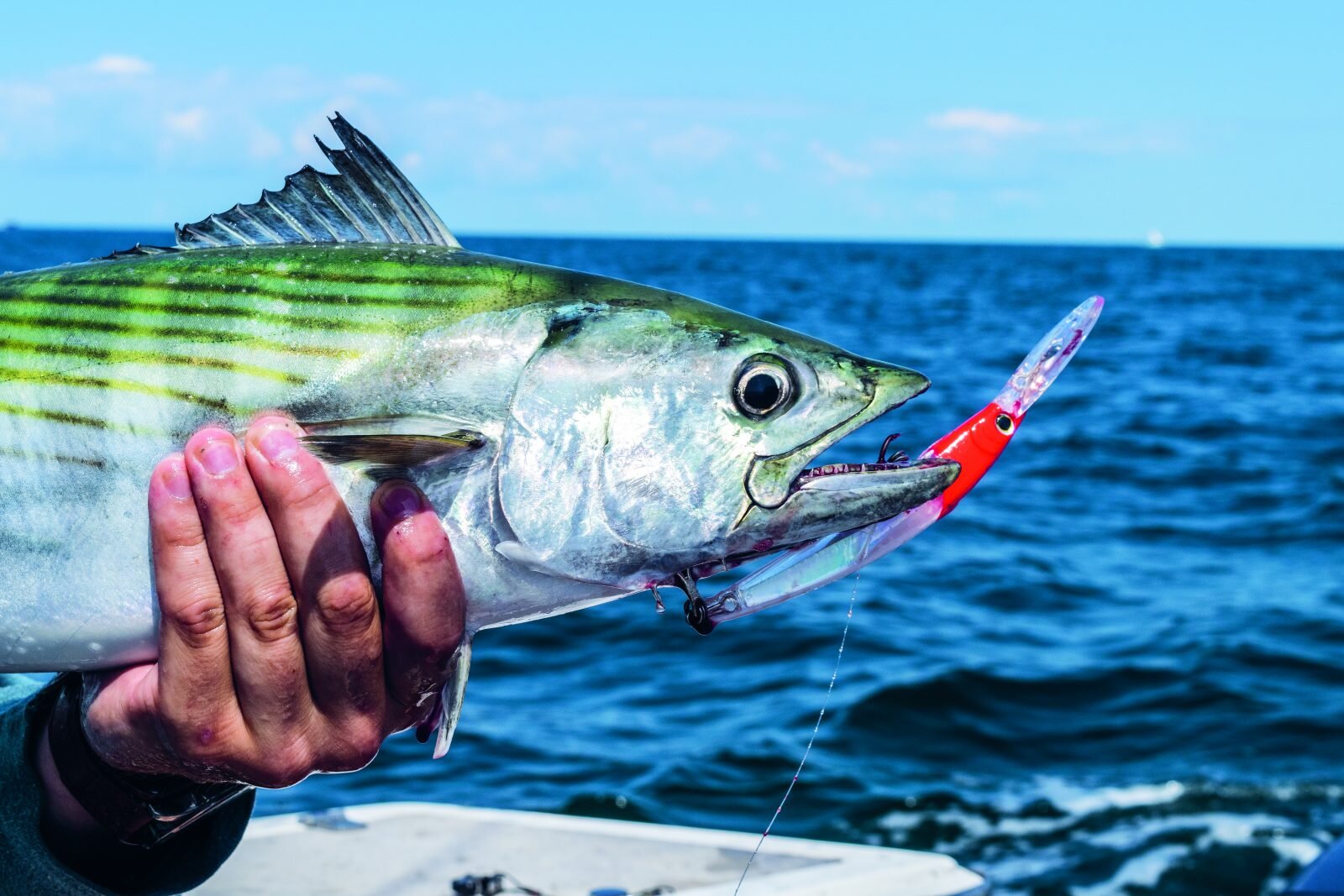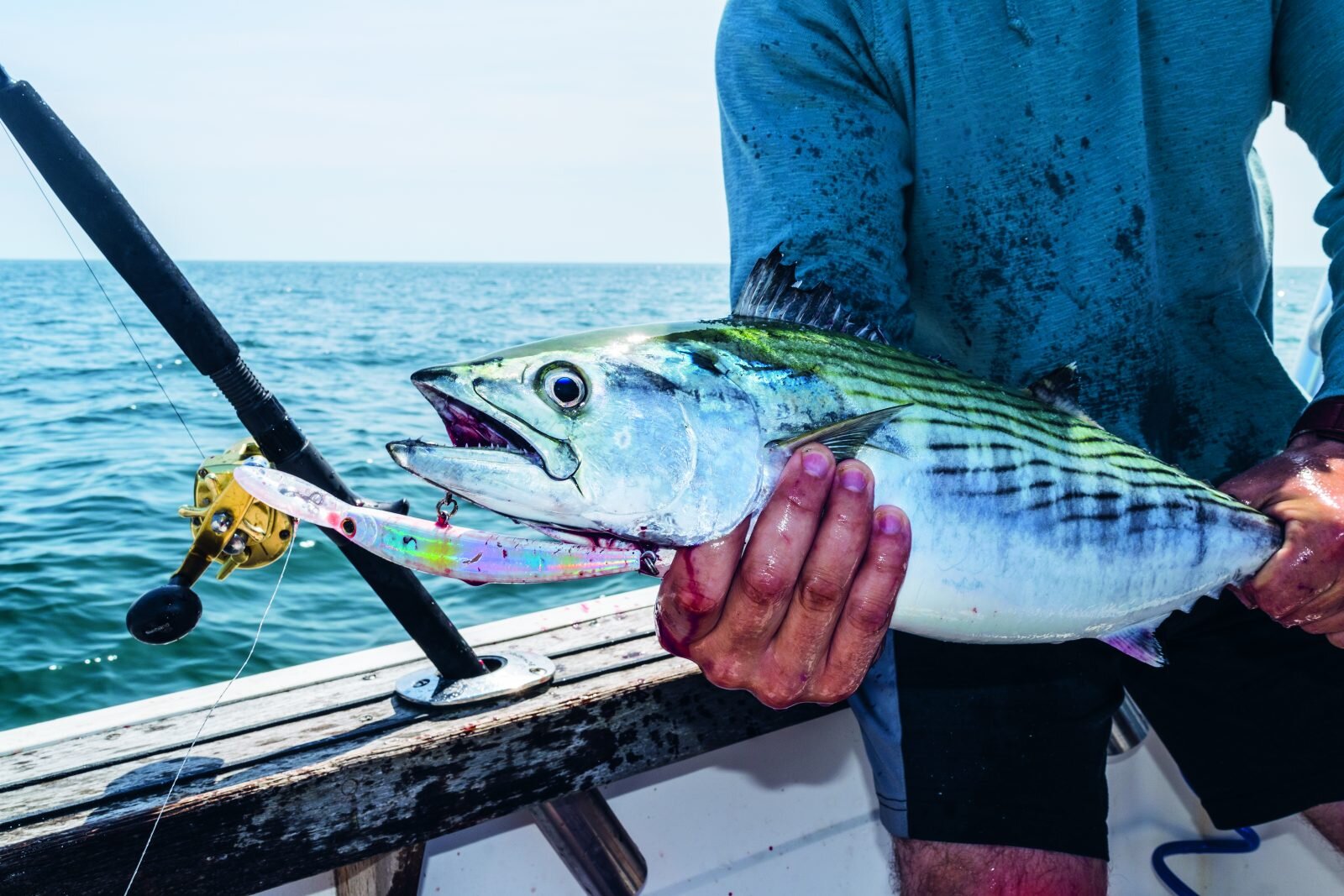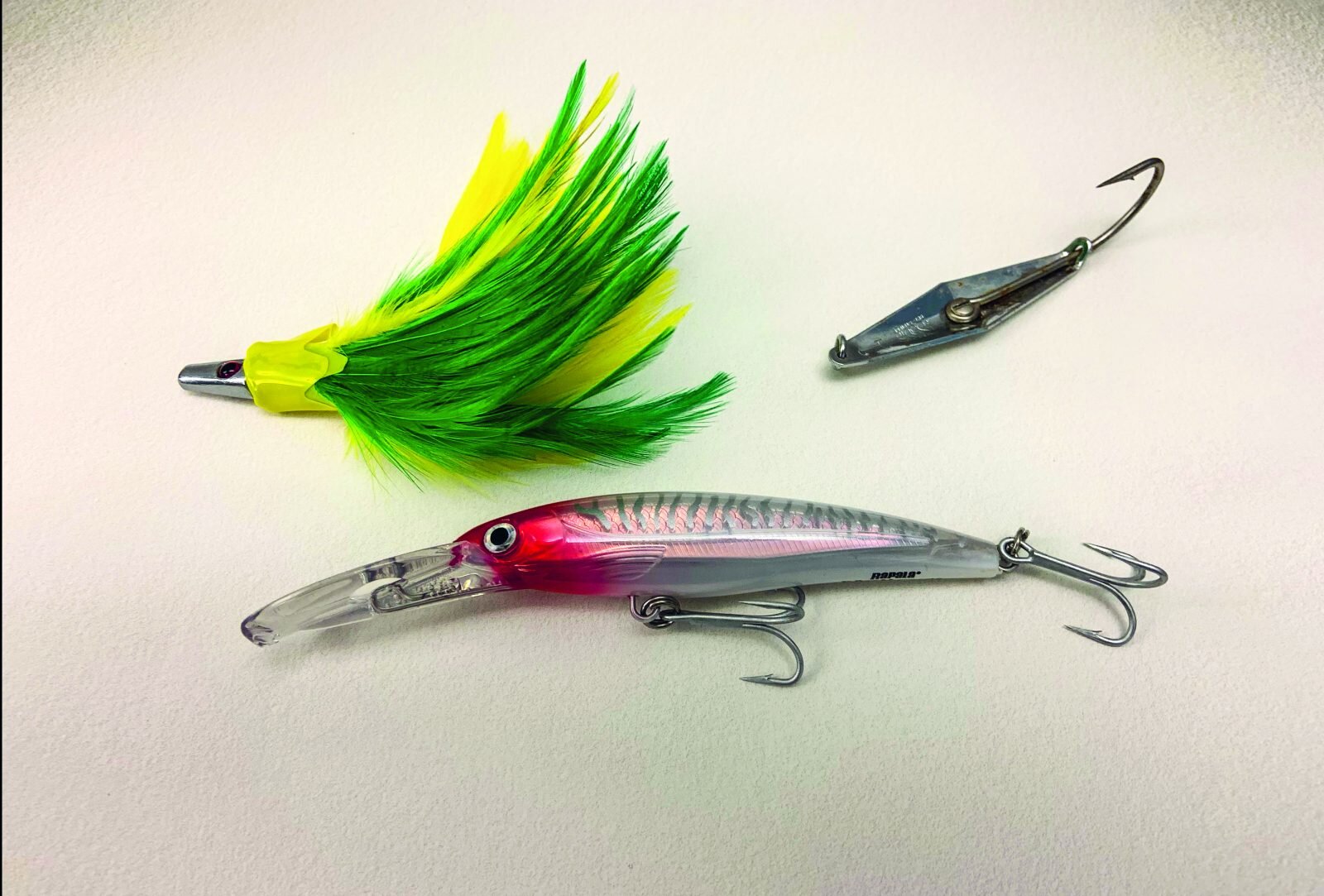Tips on Trolling for Bonito
evinrude
make your boat better
Based on the article, “How to Troll for Bonito” authored by Jimmy Fee for onthewater.com - reposted with permission
“Bonito are the appetizer to the entrée that is albie season,” writes Jimmy Fee for On the Water Magazine in his latest article, “Fishermen looking for that first taste of inshore pelagics can find it, most years, by the middle of July. By August, it’s a sure thing that the bonito have settled in.” On the Water Magazine took a trip to Martha’s Vineyard and set out to learn more about catching the brightly colored bonito. Fee lays out the techniques they used to troll effectively for these lightning-quick fish as well as the best rod/reel/bait setups for the day.
TROLLING SPEEDS
According to Fee, “Trolling for bonito feels like a scaled-down version of tuna trolling – without the long run offshore.” They are found inshore in the summer months feeding on sand eels, which are found at shoals, humps, and rips. “As a result,” writes Fee, “high-speed trolling is the most productive technique.” Setting up for these troll speeds, Fee says that “most fishermen use a two- to three-rod spread with a mix of small trolling feathers, drail-and-spoon rigs, and small, deep-diving minnow plugs.”
Courtesy of On the Water Magazine | 2020
RODS AND REELS FOR BONITO TROLLING
Fee says that a bonito trolling rod “should be able to handle 30-pound-test braided line and weights up to 4 ounces.”
“Bonito are fast—some fishermen believe they are even faster than albies—but most weigh less than 6 pounds, so to fully enjoy the fight, most fishermen use the lightest tackle they have that can handle high-speed trolling…Captain Kurt Freund, of Fishsticks Charters out of Martha’s Vineyard, said he likes reels that have both a level-wind and a lever drag. The level-wind allows his clients to fight fish without worrying about laying the line evenly, while the lever drag allows him to easily adjust the drag from its looser trolling setting to the tighter fish-fighting setting.
Freund spools his reels with 20-pound-test monofilament. The stretch and forgiveness of mono cushions the savage strike of a turning-and-burning bonito. For a leader, he bumps up to 40-pound-test fluorocarbon, which gives him a little insurance when leadering a fish next to the boat.” - Jimmy Fee
“Some days, loud, unnatural colors outperform realistic patterns.”
According to Fee, “Freund trolls a two-rod spread that, 90 percent of the time, consists of two minnow plugs like the Yo-Zuri Crystal Minnow Deep Diver. When starting out in the morning, he fishes two different colors, one natural and one “wacky.” His go-to natural pattern is a green-over-silver pattern that mimics the sand eels prevalent on the Hooter, Hedge Fence, and other shoals off the south side of Cape Cod. For the bright, eye-catching color, he likes white over pink and fire tiger.” He also says that Freund trolls between 4-6 knots. “That’s the speed where the plugs swim best,” says Freund. According to Fee, Freund usually sticks to 4 knots, but bumps it up to 5 or 6 when the bluefish become an issue.
BEST BAITS FOR BONITO
Fee cites these three baits as the best for bonito:
Courtesy of On the Water Magazine | 2020
C&H No Alibi Trolling Feathers (left)
“The 1/4- to 1-ounce No Alibi feathers have a tantalizing pulsating action on the troll that makes them a top pick for bonito, mahi, and small bluefin. Unweighted, they’ll swim just under the surface at speed, so fishermen rig them behind a drail or size 00 planer to get them down.”
Rapala X-Rap Magnum 10 (middle)
“The frantic action and eye-catching finish on the smallest size X-Rap Magnum has made for high-speed inshore trolling. The lure dives up to 10 feet deep and can handle trolling speeds up to 13 knots.”
Original Clark Spoon (right)
“A classic high-speed trolling lure, the Clark Spoon wildly kicks and flashes, calling in bonito and other pelagics from a distance.”
Courtesy of On the Water Magazine | 2020
“Violent headshakes and treble hooks are a bad combination. Be careful when unhooking bonito.”
TROLLING SPOONS AND FEATHERS
“You won’t find a boat heading out for bonito,” says Fee, “without a box of Clark Spoons and an assortment of drails or planers.” According to Fee, since these are lightweight lures, “most fishermen use 2- to 8-ounce trolling drails, though some use small planers like the size 1 Sea Striker Planer, which gets the spoon 5 to 10 feet down.”
Feathers are also effective for bonito trolling, says Fee, who says that they are “likely to attract a strike from other summertime visitors such as small bluefin or mahi.” He says that “feathers can be trolled just under the surface, but work best for bonito if sent below the surface with a drail or planer.” Fee adds that “bonito strike many of the same baits as false albacore, but seem to prefer a slightly slower retrieve.”
Courtesy of On the Water Magazine | 2020
“Toward the end of summer, false albacore mix in with bonito at the offshore shoals, and they are usually big ones!”
PEANUT BUNKER BLITZES
Bonito will viciously attack schools of peanut bunker toward the end of the summer. When this happens, Fee says that “the 3/4-ounce Crippled Herring is tough to beat.” He also lists “small soft plastics like the Albie Snax or 4-inch Ron-Z” as effective in these conditions “if you can get within range,” describing white and silver as the only colors you need for these lures.
For rods, Fee writes:
“A 7- to 7½-foot spinning rod rated for ½- to 1-ounce lures with matching reel and 20-pound-test braided line will provide the maximum casting distance with the smaller bonito lures. For leader, a 24-inch length of 12- to 20-pound-test fluorocarbon is plenty. While bonito on offshore shoals aren’t too line-shy, when they move inshore, they can be very picky at times.”
For even more tips on bonito, including how to prepare and eat them, check out the full article on onthewater.com. See the full episode of On the Water’s Angling Adventures below to see some of these insights in action.
You can find more On the Water content on Instagram at @onthewatermagazine as well as our fishing channels @waypointsalt, @waypointfish, and @waypointtv. Brought to you by Evinrude.














